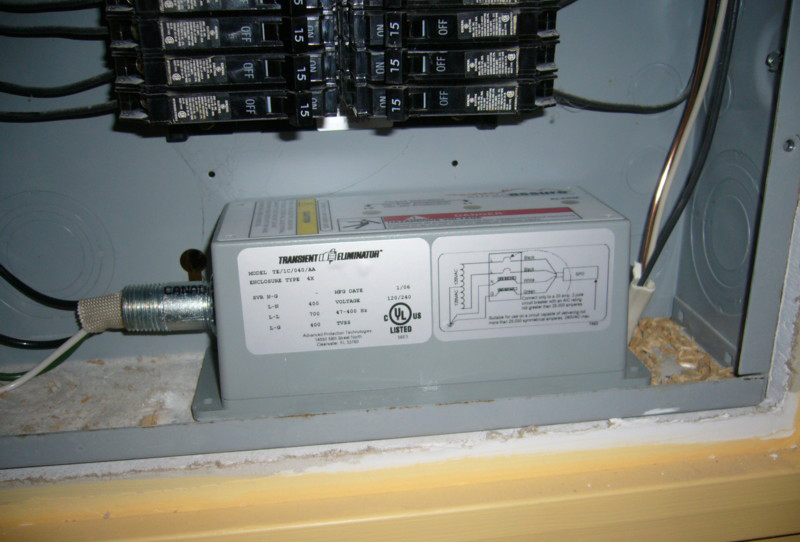Table Of Content
With the handy LED status lights, it only takes a quick glance to see that it’s currently in operable condition. However, due to the build quality and design, we’d expect this surge protection system to outlast anything on our list. Installing a whole-house surge protector can be confusing to a homeowner who isn’t sure where to start.

Popular Whole House Surge Protectors
Surge protectors can also ensure that more expensive electrical appliances such as air conditioners and heaters remain unharmed during a surge event. Yes, a properly installed whole-house surge protector will work by protecting the electrical devices and systems in a home from power surges. A power surge caused by lightning storms, power grid malfunctions, faulty wiring, and so on can damage appliances, electrical devices, and electrical panels. The surge protector stops a power surge from traveling through the home and negatively affecting these devices. The only type of surge protectors homeowners can safely install themselves are Type 3. These are outlets or power strips that simply plug into an electrical outlet.
Types of Surge Protectors
Installation requires that power to the home be disconnected while work is carried out. The installation must also be undertaken by a qualified electrician, which can add considerably to the cost. In some cases, it’s necessary to inform the utility company before work is carried out, though the contractor should arrange that. For those without in-depth electrical knowledge, choosing a surge protection device (SPD) can be a confusing prospect. I tried to keep the selection criteria as straightforward as possible while still making sure there were options for every homeowner.
Warning for homeowners: Home-protection device could actually cause a fire; Cary Fire Department warns homeowners - WTVD-TV
Warning for homeowners: Home-protection device could actually cause a fire; Cary Fire Department warns homeowners.
Posted: Tue, 08 Jan 2019 08:00:00 GMT [source]
Outlet Adapter Surge Protectors

Compared to a power strip that somewhat protects a particular outlet or device, surge protectors will protect your whole home’s electrical system. Surge protectors are also widely accepted as safer and more secure than power strips. Surge protectors protect your home’s appliances and electrical fittings from experiencing said surges in electricity. These devices are the best choice to guarantee your appliances and home’s electrical system remain safe during storms and other prone power surge events.
Surge Protector Features
The installation of Whole Home Surge Protectors can help reduce the risk of such injuries. Ever find yourself relentlessly replacing electronics due to those irksome power surges? These unpredictable voltage spikes have a knack for wearing out appliances at an alarming rate. The best home surge protectors will be rated for indoor and outdoor use, are easy to install inside of any residential load center, and come with an extended manufacturer’s warranty.
Since all incoming power to a house will likely travel through the new surge protector, it is important to install it per the manufacturer’s instructions. To start the process of finding a qualified professional to install a whole-house surge protector, homeowners can search “electrician near me” and also ask friends and family for recommendations. If the home’s electrical wiring is old and outdated, it will likely need to be upgraded before a homeowner has a new whole-home surge protector installed. New electrical wiring can cost anywhere from $600 to $2,300 depending on the extent of the project.
Generally, this provides a margin of between 15 percent and 20 percent. For example, a 120-volt surge protector with a 20 percent margin would have an MCOV of 144 volts. Extreme weather conditions like hurricanes, tornadoes, blizzards, and thunderstorms pose obvious power-outage threats, but other factors contribute to voltage surges more often than you might realize. Faults or fires in main transformers or generating equipment can disrupt your home’s power supply. Additionally, brownouts, or drops in voltage in an electrical power supply system, often result in a surge as power is restored.
How Much Does a Whole-House Surge Protector Cost?
Many manufacturers claim a life expectancy of 5 years or more, although 10 years is not uncommon. However, some low-cost devices may need to be replaced after just one significant lightning storm. If temporary loss of power is a major concern, you might want to consider a back-up generator.
We also compared models' warranties, various certifications and ratings, and compatibility with breaker box manufacturers. Equally suitable for residential and light commercial use, Leviton’s easy-to-install Type 2 surge protection panel is designed for easy flush mounting beside the main breaker panel. In that position, it offers an instant visual reference to protection status via front-mounted LEDs. The J-box metal enclosure is prepunched for standard electrical conduit connections and is NEMA 1 rated for indoor use.
The answers to the following frequently asked questions can help homeowners feel more confident before they start their surge protector project. Surge protectors guard against voltage spikes that harm electronics in your home, which could save you replacing or repairing costs. Also, they may not cover direct lightning strikes or very high-surge events if not specifically rated for such occurrences. Checking indicator lights helps you know if a protector is still doing its job right. Our team of electricians always promises to leave your home better and safer than before our arrival. We always look out for potential hazards and take correct actions before damage can occur.
It’s a gem in the Type 1 SPD category, providing top-tier protection without the premium price tag. If superior safeguarding for your home is a priority, the Square D HEPD80 is your go-to solution. Backup battery surge protectors provide instant backup power to connected devices in the event of a power failure. This surge protector also comes with a limited lifetime warranty, plus coverage for connected equipment. For the low price of about $60 at the time of this writing, it's a small investment with a big payoff. It’s impossible to say because component wear depends on the frequency and severity of power surges.













